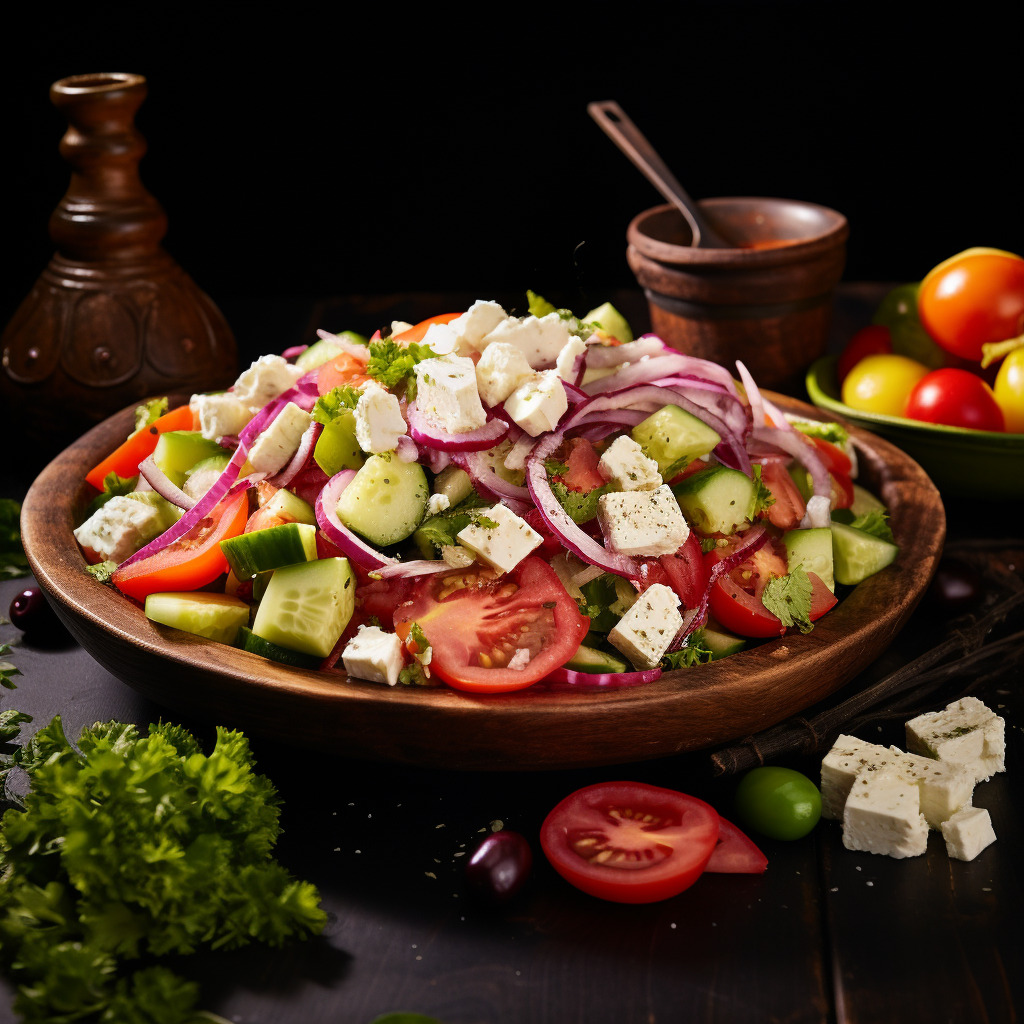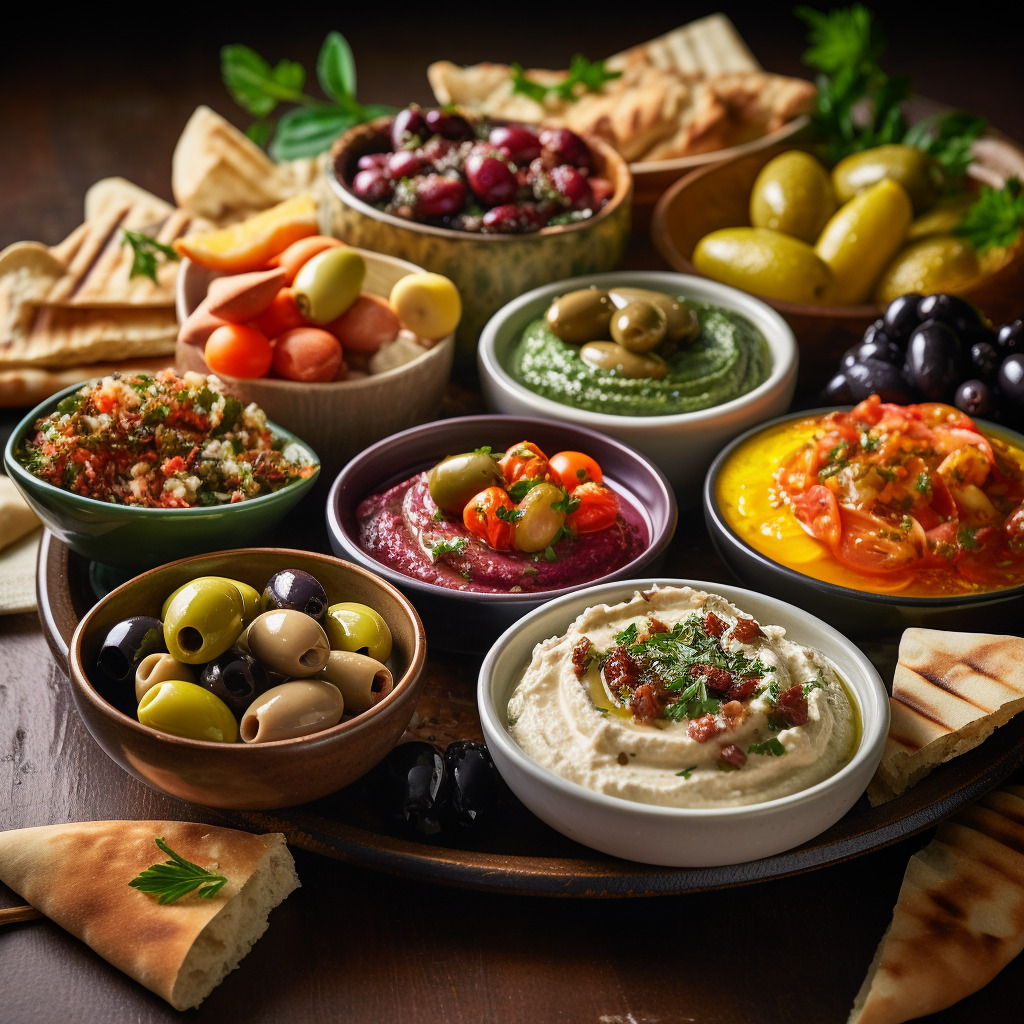The culinary panorama of Greece is as vast as the Aegean, brimming with dishes that capture the vivacious spirit of its land and sea. A luminous gem in this treasure trove is the Greek salad—a vibrant medley of colors, textures, and flavors that is more than just a salad—it’s a testament to the culinary culture of an entire nation. If you have ever wondered what goes into a Greek salad or fancied making a Greek salad yourself, come, let us embark on a Grecian culinary voyage.
The heart of making a Greek salad lies in its simplicity and devotion to freshness. Juicy tomatoes, crisp cucumbers, sharp onions, green bell peppers, and plump Kalamata olives—each component celebrates the sun-kissed, fertile landscapes of Greece. However, what truly elevates this dish from a mere mix of vegetables to an iconic traditional recipe is the feta cheese—tangy, creamy, and a delightful contrast to the crunchy veggies. Dressed with a drizzle of olive oil, a squeeze of lemon, and a dash of oregano, the Greek salad is a symphony of flavors that dances on your palate.
However, as we delve deeper into what goes into a Greek salad, we discover a plethora of regional variations that tell fascinating tales of local preferences and global cooking techniques. In the island of Crete, for instance, you might find rusks, a type of dried bread, added for an extra crunch. In the northern parts of Greece, the salad might feature a hint of spiciness with the addition of local hot peppers.
Through these various takes on making a Greek salad, we witness the celebration of local ingredients and flavors, and the cultural significance of food. These variations are not simply regional tweaks to a national dish. Instead, they are delicious narratives of the regional identities, local harvests, and shared culinary heritage that form the fabric of Greek gastronomy.
As you explore the multitudes of what goes into a Greek salad and the different approaches to making a Greek salad, remember to savor each ingredient, each variation, not just as parts of a dish, but as fragments of the rich Greek culinary tapestry.
In conclusion, the Greek salad stands as a vibrant symbol of Greek cuisine—fresh, flavorful, and steeped in tradition. The next time you’re making a Greek salad, remember—you’re not just preparing a dish but weaving a story of a land, a culture, and a love for freshness and flavor that is quintessentially Greek.
Greek-Inspired Brunch: A Feast Fit for the Gods
Sustainable Cooking: Reducing Waste in Your Greek Kitchen
Captivating Greek Wines: Toasting to Ancient Vines
Meze Madness: The Art of Greek Appetizers
Mouthwatering Greek Desserts: Beyond Baklava
The Ultimate Guide to Greek Olive Oil: Liquid Gold in Your Kitchen
Copyright © 2023 www.gyroshousetx.com
720 W Division St, Arlington, TX 76012
(817) 460-4824






